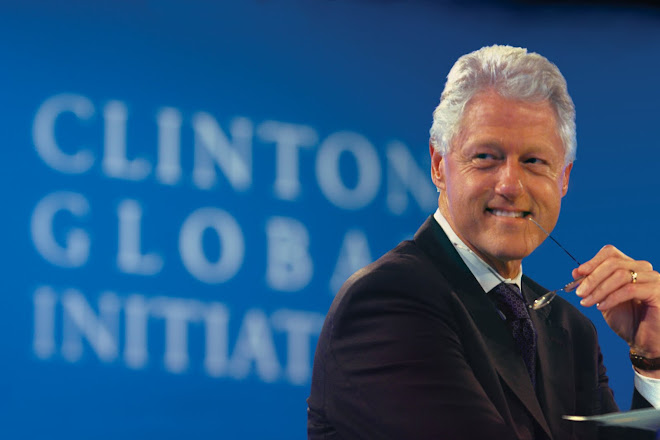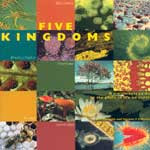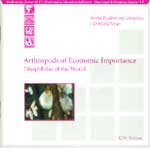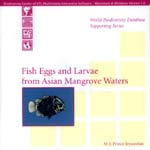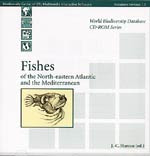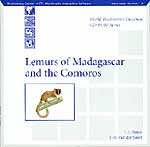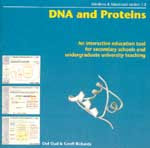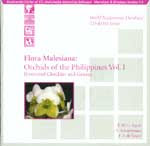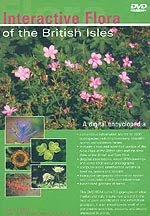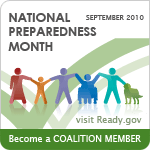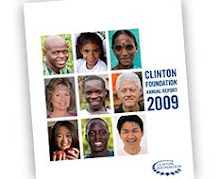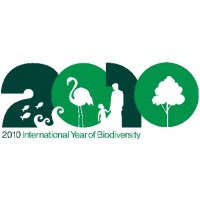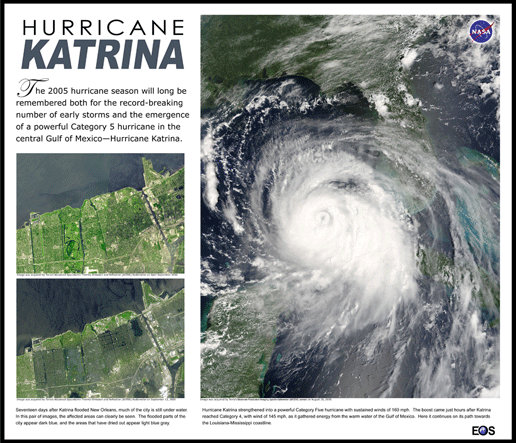About Me

- WERI FOUNDATION
- Ensure inclusive and equitable quality education and promote lifelong learning opportunities for all
Mr.Vladimir Putin Vladimirovich is the Prime Minister of the Russian Federation
Uploads by WERICAMPAIGN
Followers
BBC News - Science & Environment
2010-08-29
Hurricane Katrina: A NASA Satellite Video Retrospective
08.24.10 -By the time the hurricane subsided, Katrina had claimed more than 1,800 human lives and caused roughly $125 billion in damages
On Aug. 29, 2005, after passing over the Caribbean and Florida, Katrina made landfall along the Gulf Coast as a category 3 hurricane on the Saffir-Simpson scale. As hurricanes go, Katrina was actually only moderate in size when it reached the Mississippi and Louisiana coasts, having weakened from a category 5 the day before. However, Katrina had a very wide footprint, which caused a broad area of large ocean swells to develop within the Gulf of Mexico. As the hurricane made its final landfall, the resulting storm surge was massive and unrelenting. Ultimately, this storm surge was responsible for much of the damage as it flooded coastal communities, overwhelmed levees, and left at least 80 percent of New Orleans underwater.
More than just a model for recovery, New Orleans and the Gulf Coast give the people of Haiti the hope that in just 5 years, great progress can be made
Statement by President Bill Clinton on the Fifth Anniversary of Hurricane Katrina
August 28, 2010 | Bill Clinton | Statements
"Tomorrow, five years will have passed since Hurricane Katrina ravaged the Mississippi and Louisiana shorelines, taking the lives of over 1,800 people and causing more than $81 billion of damage. Although new challenges — from a tragic oil spill to a nationwide economic recession — have captured the headlines in the region, we have not forgotten those who lost their loved ones, their livelihoods, and their homes in the storm.
In five years, great progress has been made: metro New Orleans has recovered more than 90 percent of its population and 85 percent of its jobs. Musicians and artists are returning in droves. Infrastructure has been built stronger than ever before. Children are learning more in their schools. But there is still work to be done. People still need jobs, education and training, and the assurance that what happened five years ago will never happen again.
I’ve tried to do what I can to help. After the storm, I teamed up with President George H.W. Bush to raise money for relief efforts. Our Bush Clinton Katrina Fund (BCKF) raised over $130 million, which we awarded to projects that have rebuilt schools and libraries, rehabilitated housing, created jobs, provided health services, put kids back in school, and protected the region’s rich culture.
In addition, my Foundation has been involved in a number of post-disaster efforts, including helping local residents access the earned income tax credits they deserved; advising the City of New Orleans on incorporating clean energy into their plans; and holding our first Clinton Global Initiative meeting for university students at Tulane University in 2008. Members of our Clinton Global Initiative, including Brad Pitt’s Make It Right Foundation, have made incredible commitments that are improving lives, homes, and communities in the Gulf region.
In five years, the Gulf Coast has come back in a way that inspires great confidence and optimism in me as I work with the people of Haiti after the earthquake. We are employing many of the lessons we’ve learned from Hurricane Katrina and the tsunami, including forging strong coordination among NGOs, governments, the private sector and private citizens, which was key to the success in New Orleans.
But more than just a model for recovery, New Orleans and the Gulf Coast give the people of Haiti the hope that in just five years, great progress can be made. And if we work together, just as we did after Katrina, we can not only build Haiti back — we can build it back better."
August 28, 2010 | Bill Clinton | Statements
"Tomorrow, five years will have passed since Hurricane Katrina ravaged the Mississippi and Louisiana shorelines, taking the lives of over 1,800 people and causing more than $81 billion of damage. Although new challenges — from a tragic oil spill to a nationwide economic recession — have captured the headlines in the region, we have not forgotten those who lost their loved ones, their livelihoods, and their homes in the storm.
In five years, great progress has been made: metro New Orleans has recovered more than 90 percent of its population and 85 percent of its jobs. Musicians and artists are returning in droves. Infrastructure has been built stronger than ever before. Children are learning more in their schools. But there is still work to be done. People still need jobs, education and training, and the assurance that what happened five years ago will never happen again.
I’ve tried to do what I can to help. After the storm, I teamed up with President George H.W. Bush to raise money for relief efforts. Our Bush Clinton Katrina Fund (BCKF) raised over $130 million, which we awarded to projects that have rebuilt schools and libraries, rehabilitated housing, created jobs, provided health services, put kids back in school, and protected the region’s rich culture.
In addition, my Foundation has been involved in a number of post-disaster efforts, including helping local residents access the earned income tax credits they deserved; advising the City of New Orleans on incorporating clean energy into their plans; and holding our first Clinton Global Initiative meeting for university students at Tulane University in 2008. Members of our Clinton Global Initiative, including Brad Pitt’s Make It Right Foundation, have made incredible commitments that are improving lives, homes, and communities in the Gulf region.
In five years, the Gulf Coast has come back in a way that inspires great confidence and optimism in me as I work with the people of Haiti after the earthquake. We are employing many of the lessons we’ve learned from Hurricane Katrina and the tsunami, including forging strong coordination among NGOs, governments, the private sector and private citizens, which was key to the success in New Orleans.
But more than just a model for recovery, New Orleans and the Gulf Coast give the people of Haiti the hope that in just five years, great progress can be made. And if we work together, just as we did after Katrina, we can not only build Haiti back — we can build it back better."
ODU: Idea Fusion
A video highlighting Old Dominion University's innovative research and researchers who are working to solve real-world problems.
Old Dominion University is Virginia's forward-focused, public doctoral research university for high-performing students from around the world who want a rigorous academic experience in a fast-paced and profoundly multi-cultural community.
Old Dominion University is Virginia's forward-focused, public doctoral research university for high-performing students from around the world who want a rigorous academic experience in a fast-paced and profoundly multi-cultural community.
2010-08-27
COP 10 Promotion Committee > COP 10 "AICHI-NAGOYA PLAN"

In March 2009, the Aichi-Nagoya COP 10 CBD Promotion Committee formulated the COP 10 "AICHI-NAGOYA PLAN," which includes details on supporting the operation of COP 10, activities to be implemented by the Aichi-Nagoya COP 10 CBD Promotion Committee to create sustainable communities, and methods to encourage various organizations to participate in COP 10 and engage in reciprocal cooperation.

* Aichi is ensuring creative growth through Human Resource Development: Guidelines of new policies (summary) (PDF:7,861KB)
* Making Aichi a Place Where Human Rights Are Respected : Aichi Prefecture Action Plan for Human Rights Education and Enlightenment Environmental Policy (PDF:4,980KB)

* 21 Activities for Local and Global Environmental Conservation towards the twenty-first century : Aichi Agenda 21 (PDF:2,930KB)
* The Aichi Environmental Conservation Strategy: Making a Comprehensive Effort Through Cooperation on Many Fronts
China biodiversity strategy and action plan

"Climate change and biodiversity conservation cannot be separated
since they are complementary to each other - biodiversity adaption to climate change is a necessary measure to protect biodiversity and an important approach to combat climate change."
Wu Xiaoqing, Vice-Minister, China
Ministry of Environmental Protection
Montreal, 26 August 2010 – China, which in 1994 became the first country to prepare a national biodiversity strategy and action plan (NBSAP), is now among a select group of countries that have initiated a new strategy and action plan in advance of the Nagoya Biodiversity Summit.
Sponsored by the EU-China Biodiversity Programme, an international forum on the new biodiversity strategy was held in Chengdu, Sichuan Province, on 25-26 August with the
participation of more than 300 experts, including international non-governmental organizations and other Chinese partners. The meeting was opened by Vice-Minister Li Ganjie of the Ministry of Environmental Protection, who reiterated the importance China attaches to international cooperation.
“This international forum, with the participation of our distinguished foreign guests, is a demonstration of China’s commitment to promote international cooperation to address the biodiversity challenges at the national and international level,” said Vice-Minister Li.
The new biodiversity strategy and action plan for the period 2010-2030, now submitted for State Council approval, comprises eight strategic tasks, 29 actions and 11 safeguarding measures. It aims to increase by 2020 the area of biodiversity conservation in China from 15 to 18 per cent of the area of the country. The strategy was prepared with the full participation of all stakeholders, including representatives of civil society.
Sichuan Province is the first Chinese province to prepare a subnational biodiversity strategy and action plan.
“In spirit, in letter, and in content, the approach of China’s new twenty-year biodiversity strategy is remarkable and an example to be emulated by others,” said Ahmed Djoghlaf, Executive Secretary of the Convention on Biological Diversity.
During his visit to Chengdu, Mr. Djoghlaf had a bilateral meeting with Vice Minister Li, and also met with the Vice Governor of Sichuan Province on the preparation of the tenth meeting of the Conference of the Parties to the Convention on Biological Diversity, to be held in Nagoya, Aichi Prefecture, Japan, from 18 to 29 October this year.
Read More :
COP 10 : AICHI-NOGAYA CITY BIODIVERSITY SUMMIT 2010
* EU-China Biodiversity Programme : UNDP Projects Summary,Challenge and achievement
* EU-China Biodiversity Programme (ECBP) 2006-2010:Strengthen biodiversity management for the conservation of specific ecosystems in China
* EU-China Biodiversity Programme (ECBP)Benefits :improvement of rangelands, water supplies become more dependent and the risks of downstream floods and droughts are diminished for the distant populations in the Yellow River basin.
Secretariat of the Convention on Biological Diversity World Trade Center
413 St. Jacques Str. Office 800
Montreal, QC H2Y 1N9
Canada
Tel.: +1 514 288 2220
Fax: +1 514 288 6588
E-mail: secretariat@cbd.int
Website: http://www.cbd.int/
2010-08-17
President Bill Clinton prepares to celebrate his 64th birthday on Thursday, August 19
Since 2001 the Clinton Foundation has worked to strengthen the capacity of governments and individuals to alleviate poverty, improve global health, strengthen economies, and protect the environment. Each year, we build on our success to find new ways to help more people through new partnerships, programs, and approaches. Hear about some of our recent accomplishments.
As President Bill Clinton prepares to celebrate his 64th birthday on Thursday, I'm hoping you'll help me give him something truly special this year -- a gift in keeping with the spirit of his work and his dedication to improving lives around the world.
We've put together a birthday wish list for him with projects that we know he's hoping to take on this year -- and already hundreds of supporters have pitched in.
Touching lives from Malawi to Colombia, these are projects that will create sustainable solutions to poverty, disease, global warming, and inequality.
In honor of his birthday this week, help President Clinton make these projects a reality. Then send him a personalized e-card letting him know what you picked out.
His wish list is an ambitious set of goals for the progress of his Foundation -- composed of specific needs he identified when he visited many of these locations over the last year. Before his 65th birthday, he wants to reduce malnutrition of Colombian schoolchildren by 10 percent, give more than 20,000 farmers in Malawi the tools to improve their lives, and much more.
WERI, President Clinton and his Foundation rely on the support of individuals like you to accomplish such ambitious projects. Don't miss out on this opportunity to help celebrate his birthday and become a crucial part of our work around the world for the coming year.
Will you make a gift toward an item on President Clinton's wish list?
Afterward, you'll be able to send him a personalized e-card letting him know what you've picked out.
P.S. You can also contribute toward President Clinton's birthday wish list using Causes on Facebook.
Donate toward President Clinton's Wish List
In honor of President Clinton's 64th birthday on August 19, make a gift that will help the Clinton Foundation implement sustainable, long-term solutions to the world's most urgent problems.
After you make your contribution, you'll have the opportunity to personalize a card that will go straight to President Clinton on his birthday.

Thank you for your support of our work.
Sincerely,
Bruce Lindsey
Chief Executive Officer
Clinton Foundation
As President Bill Clinton prepares to celebrate his 64th birthday on Thursday, I'm hoping you'll help me give him something truly special this year -- a gift in keeping with the spirit of his work and his dedication to improving lives around the world.
We've put together a birthday wish list for him with projects that we know he's hoping to take on this year -- and already hundreds of supporters have pitched in.
Touching lives from Malawi to Colombia, these are projects that will create sustainable solutions to poverty, disease, global warming, and inequality.
In honor of his birthday this week, help President Clinton make these projects a reality. Then send him a personalized e-card letting him know what you picked out.
His wish list is an ambitious set of goals for the progress of his Foundation -- composed of specific needs he identified when he visited many of these locations over the last year. Before his 65th birthday, he wants to reduce malnutrition of Colombian schoolchildren by 10 percent, give more than 20,000 farmers in Malawi the tools to improve their lives, and much more.
WERI, President Clinton and his Foundation rely on the support of individuals like you to accomplish such ambitious projects. Don't miss out on this opportunity to help celebrate his birthday and become a crucial part of our work around the world for the coming year.
Will you make a gift toward an item on President Clinton's wish list?
Afterward, you'll be able to send him a personalized e-card letting him know what you've picked out.
P.S. You can also contribute toward President Clinton's birthday wish list using Causes on Facebook.
Donate toward President Clinton's Wish List
In honor of President Clinton's 64th birthday on August 19, make a gift that will help the Clinton Foundation implement sustainable, long-term solutions to the world's most urgent problems.
After you make your contribution, you'll have the opportunity to personalize a card that will go straight to President Clinton on his birthday.

Thank you for your support of our work.
Sincerely,
Bruce Lindsey
Chief Executive Officer
Clinton Foundation
2010-08-08
"The Lullaby" - August 8, 1988 was the day a peaceful demonstration turned into a bloody massacre in BURMA
Major political parties in the country are the National League for Democracy and the Shan Nationalities League for Democracy, although their activities are heavily regulated and suppressed by the military government. Many other parties, often representing ethnic minorities, exist. The military government allows little room for political organisations and has outlawed many political parties and underground student organisations. The military supported the National Unity Party in the 1990 elections and, more recently, an organisation named the Union Solidarity and Development Association.
Government propaganda poster states: "Tatmadaw and the people, cooperate and crush all those harming the union."In 1988, the army violently repressed protests against economic mismanagement and political oppression. On 8 August 1988, the military opened fire on demonstrators in what is known as 8888 Uprising and imposed martial law. However, the 1988 protests paved way for the 1990 People's Assembly elections. The election results were subsequently annulled by Senior General Saw Maung's government. The National League for Democracy, led by Aung San Suu Kyi, won over 60% of the vote and over 80% of parliamentary seats in the 1990 election, the first held in 30 years. The military-backed National Unity Party won less than 2% of the seats.

August 8, 1988 was the day a peaceful demonstration turned into a bloody massacre in BURMA.
Please help us commemorate! 7 minutes of silence today Midnight.
Reign of Terror in Burma Requires Genuine U.N. Action - Not Just Official Visits

Government propaganda poster states: "Tatmadaw and the people, cooperate and crush all those harming the union."In 1988, the army violently repressed protests against economic mismanagement and political oppression. On 8 August 1988, the military opened fire on demonstrators in what is known as 8888 Uprising and imposed martial law. However, the 1988 protests paved way for the 1990 People's Assembly elections. The election results were subsequently annulled by Senior General Saw Maung's government. The National League for Democracy, led by Aung San Suu Kyi, won over 60% of the vote and over 80% of parliamentary seats in the 1990 election, the first held in 30 years. The military-backed National Unity Party won less than 2% of the seats.

August 8, 1988 was the day a peaceful demonstration turned into a bloody massacre in BURMA.
Please help us commemorate! 7 minutes of silence today Midnight.
Reign of Terror in Burma Requires Genuine U.N. Action - Not Just Official Visits

2010-08-06
IHH, which plays a central role in organizing the flotilla to the Gaza Strip, is a Turkish humanitarian relief fund with a radical Islamic anti-West

Transcription - 02/06/2010 - No Love Boat"
Once again, Israel faces hypocrisy and a biased rush to judgment. I'm afraid this isn't the first time.
Last year, Israel acted to stop Hamas from firing thousands of rockets into Israel's towns and cities. Hamas was firing on our civilians while hiding behind civilians. And Israel went to unprecedented lengths to avoid Palestinian civilian casualties. Yet it was Israel, and not Hamas, that was accused by the UN of war crimes.
Now regrettably, the same thing appears to be happening now.
Read more on : http://www.pmo.gov.il/
Intelligence and Terrorism Information Center
IHH, which plays a central role in organizing the flotilla to the Gaza Strip, is a Turkish humanitarian relief fund with a radical Islamic anti-Western orientation. Besides its legitimate philanthropic activities, it supports radical Islamic networks, including Hamas, and at least in the past, even global jihad elements.
Portrait of IHH
1. Prominent among the coalition organizations participating in the aid flotilla scheduled to arrive in the Gaza Strip in the coming days is the Turkish IHH (Insani Yardim Vakfi, IHH, “humanitarian relief fund”). It is a radical Islamic organization which was established in 1992 and formally registered in Istanbul in 1995. It is headed by Bülent Yildirim.
IHH head Bülent Yildirim
(www.ihh.org.tr, April 7, 2010)

2. IHH has a broad program of important activities in distressed areas. They include sending food and support to orphans, establishing educational institutions, hospitals and clinics, programs for vocational education, supplying medicines, building mosques and preventing the violation of human rights in various Islamic locations throughout the world. In recent years it has begun widening its activities to European countries, in part by establishing branches which bear its name.
3. In practice, besides its legitimate humanitarian activities, IHH supports radical Islamic terrorist networks. In recent years it has prominently supported Hamas (through the Union of Good). In addition, the ITIC has reliable information that in the past IHH provided logistical support and funding to global jihad networks.
IHH logo: The dove of peace appears at the lower right of the globe.

IHH Links To Hamas
4. IHH’s orientation is radical-Islamic and anti-American, and it is close to the Muslim Brotherhood (Hamas’ parent movement). IHH supports Hamas and does not hide the connection between them. Hamas also considers its links to IHH and Turkey to be extremely important, and regards Turkey as a target audience for its propaganda network (Palestine-Information, Hamas’ main website, has a Turkish version, and as of the end of 2009, the website of its military wing, the Izz al-Din al-Qassam Brigades, has also appeared in Turkish).
5. In recent years, especially since Hamas took over the Gaza Strip, IHH has supported Hamas’ propaganda campaigns by organizing public support conferences in Turkey. At those conferences, which featured the participation of senior IHH figures, the heads of IHH expressed their support for Hamas and its strategy (including the armed struggle it favors), in defiance of the Palestinian Authority, Hamas’ rival.
6. IHH is a member of the Union of Good, an umbrella organization of more than 50 Islamic funds and foundations around the globe, which channels money into Hamas institutions in the Palestinian Authority-administered territories. As a Union of Good member IHH has connections with other worldwide Islamic funds and foundations which support Hamas. Among other things, the support includes initiating and conducting joint projects whose objectives are to bolster the de facto Hamas administration in the Gaza Strip and Hamas’ civilian infrastructure in Judea and Samaria, which also supports terrorism (the infrastructure is under pressure from the Palestinian Authority security services). IHH, which has become an important factor in global fund-raising for Hamas, transfers significant amounts of money to Hamas institutions in Judea and Samaria, including the Islamic Charitable Society in Hebron and the Al-Tadhamun Charitable Society in Nablus (Hamas’ two central “charitable societies,” both outlawed by Israel).
7. IHH operates widely throughout the Gaza Strip. To promote its activities it opened a branch there, headed by Muhammad Kaya, who recently stated that IHH intended to send other aid flotillas to the Gaza Strip (See below). In January 2008 an IHH delegation met with Ahmed Bahar, a senior Hamas activist who is acting chairman of Hamas’ council in the Gaza Strip. At the meeting the delegation revealed the extent of the aid it had given Hamas in the Gaza Strip during the preceding year and said it intended to double the sum in the future. In January 2009 IHH head Bülent Yildirim met with Khaled Mashaal, chairman of Hamas’ political bureau in Damascus, and Mashaal thanked him for the support of his organization.
Bülent Yildirim and Khaled Mashaal (January 2009).1
.1.jpg)
Bülent Yildirim and de facto Hamas administration head Ismail Haniya (January 7, 2010).2
.2.jpg)
Bülent Yildirim meets Ismail Haniya and other important people in the Gaza Strip (January 7, 2010).3
.3.jpg)
Israel Outlaws IHH and Expels an IHH Activist
9. Israel outlawed IHH because of its affiliation with the Union of Good and because it is an important factor in Hamas’ global fund raising. It was included in a decision made by Defense Minister Ehud Barak in 2008 which outlawed 36 associations which belonged to the Union of Good (IHH appeared as number 36 on the list4).
10. In November 2009 IHH sent one of its activists, a man named Izzat Shahin, to Judea and Samaria to open an office (in addition to its Gaza Strip office). Shahin started work supporting Hamas “charitable societies.” He transferred tens of thousands of American dollars from IHH to the Islamic Charitable Society in Hebron and Al-Tadhamun in Nablus, two of Hamas’ most important “charitable societies.” His activities were thwarted by the Israeli security forces. In April 2010 he was detained for questioning on suspicion of involvement in financing terrorism and supporting Hamas, and was deported from Israel immediately after his interrogation in compliance with an official Turkish request.
Part of a document seized by the IDF during Operation Defensive Shield (2002): A table prepared by the Union of Good containing the names of shaheeds who carried out mass-murder suicide bombing attacks in Israeli cities. It was used to arrange payments to the suicide bombers’ families though the Hamas-affiliated Islamic “charitable society” Al-Tadhamun in Nablus. It is one of the charitable societies Izzat Shahin transferred money to after he was appointed IHH representative in Judea and Samaria in 2009.

IHH’s Links with the Global Jihad
11. The ITIC has reliable information indicating that in the past IHH had links with global jihad and Islamic terrorist elements in the Middle East. As part of its connections with the global jihad it supported jihadist terrorist networks in Bosnia, Syria, Iraq, Afghanistan and Chechnya.
12. That was manifested by logistic support for the transfer of weapons and money. This information verifies findings of a study conducted by a Danish research institute into IHH’s past links with Al-Qaeda (See below).
13. We do not have updated information about current IHH links with global jihad elements, however, its activities in the past may indicate its nature.
Danish Research Institute Exposes Past IHH Links with Al-Qaeda
14. In 2006 a Danish research institute called the Danish Institute for International Studies conducted a study which reported that in the past IHH had connections with Al-Qaeda and global jihad operatives.5 The well-documented study was conducted by Evan Kohlman,6 an American researcher who specializes in Al-Qaeda and related subjects. It deals with the involvement of Islamic charity funds and foundations in supporting terrorism. Pages 10-14 relate to IHH.
Title page of the Danish Institute’s study.

15. According to the study, the Turkish authorities began investigating IHH at least in December 1997, after having received information that senior IHH figures had purchased automatic weapons from radical Islamic organizations. The office of the organization in Istanbul was consequently raided and activists were arrested. During the raid the Turkish security forces found weapons, explosives, instructions for making IEDs and a flag with a jihad message. An examination of the documents found in IHH office indicated that IHH members were planning to take part in jihad activities in Afghanistan, Bosnia and Chechnya.
16. The study quotes a French intelligence report stating that in the mid-1990s IHH leader, Bülent Yildirim, was directly involved in recruiting “veteran soldiers” to organize jihad activities. According to the French report, a number of operatives were sent by IHH into war zones in Islamic countries to gain combat experience. The report also stated that IHH transferred money, “caches of firearms, knives and pre-fabricated explosives” to Muslim fighters in those countries.
Passage from the study quoting a French intelligence report. It deals with the
involvement of IHH and its leader in global jihad activities during the 1990s.

17. The study also states that an examination of IHH’s telephone records in 1996 showed repeated calls in 1996 to an Al-Qaeda guest house in Milan and to Algerian terrorists operating in Europe (one of whom was notorious Al-Qaeda figure Abu Ma’ali [Abd al-Qadr Mukhtari], who operated in Bosnia). IHH’s name was also mentioned during the trial of Ahmed Ressam held in the United States in 2000 (Ressam was a senior Al-Qaeda operative active in Canada, who at the end of 1999 entered the United States in a car carrying 600 kilograms (1320 pounds) of explosives. He planned to carry out a mass-casualty attack at the Los Angeles International Airport on the eve of the millennium.) The United States federal prosecutors called Jean-Louis Bruguière, a leading French investigating magistrate in charge of terrorism affairs, as an expert witness. He testified that IHH had played an important role in Al-Qaeda’s planned attack. According to Bruguière, IHH served as a cover for Al-Qaeda and acquired forged documents, enlisted operatives and transferred weapons.
Passage from the study dealing with IHH cover for the global jihad.

18. According to the study, following the American invasion of Iraq in 2003, Bülent Yildirim and IHH played a key role in anti-Western incitement among Turkish Muslims. At the end of 2000 IHH organized protests against the attempt to overthrow Saddam Hussein, during which Israeli and American flags were burned. In December 2004 IHH organized an anti-American march in Istanbul. During the march Bülent Yildirim told the Turkish Anatolia News Agency that the intelligence cooperation between the United States, Britain and Turkey had to stop, otherwise IHH would organize actions in front of every consulate, and if necessary organize 50,000 or 100,000 people in front of the American consulate. At a demonstration held in December 2004, anti-American slogans were shouted, including “Murderer sent by the murderous United States, get out of the Middle East,” and “Long live the resistance.”
Passage from the study dealing with IHH’s anti-American activities in Iraq.

The Central Role of IHH in the Aid Flotilla Sailing to the Gaza Strip
19. IHH is prominent among the many pro-Palestinian organizations in Turkey participating in the aid flotilla, which will reach the Gaza Strip in the coming days. Its participation is part of the massive aid it gives Hamas and its desire to make propaganda capital for Hamas and itself.
20. To that end IHH purchased three ships (of the nine in the flotilla): a passenger ship named the Mavi Marmaris and two cargo ships (one named “Gaza”). The Mavi Marmaris left Istanbul on May 22 en route to Antalya, where 500 passengers were expected to board it. The three ships will sail from Turkey to Cyprus to join the others, and from there they will sail together to the Gaza Strip (where they are apparently expected to arrive on the morning of May 29). In addition, in recent months IHH aided the de facto Hamas administration’s ministries of transportation and of public works by carrying out various projects in the
The flotilla’s route to the Gaza Strip. The red line refers to the Rachel Corrie, sailing from Ireland.7

21. On April 7, 2010, IHH head Bülent Yildirim told a press conference in Istanbul that the flotilla would be a “test” for Israel. He said that should Israel oppose the flotilla it would be considered “a declaration of war” on the countries whose activists arrived on board the ships (IHH website, April 7, 2010). In a fiery speech given at the launching of the Mavi Marmaris on May 23, he said to Israel, “Handle this crisis well. If you prevent [the flotilla from reaching the Gaza Strip] you will remain isolated in the world and harm yourselves” (IHH website in Turkish, May 23, 2010). On May 21 Muhammad Kaya, head of IHH’s branch office in the Gaza Strip, said there was a plan to send flotillas to the Gaza Strip every month (Al-Jazeera-Info website, arabianawareness.com, May 21, 2010).
The ceremony marking the departure of the Mavi Marmaris from Istanbul, organized by IHH. In the first row, second from the right, is Ra’ed Salah, head of the northern faction of the Islamic Movement in Israel. Fourth from the left is Kazem Sawalha, a Hamas activist affiliated with the Muslim Brotherhood, who found refuge in Britain. He was one of the chief organizers of the previous aid convoys (LifeLine) to the Gaza Strip (IHH website, May 23, 2010).

The rally in Turkey accompanied preparations for the ship’s departure. The participants are holding Turkish, Palestinian and Hamas flags, and flags of organizations affiliated with Hamas and radical Islam (the shahadah is inscribed on the green flag) ( IHH website, May 23, 2010).

--------------------------------------------------------------------
1 http://www.spittoon.org/archives/4168 .
2 http://hurryupharry.org/2010/04/14/oh-jesus ,
http://www.velfecr.com/gazze-de-goz-yasartan-buyuk-bulusma-video-foto-1408-haberi.html.
3 http://www.velfecr.com/gazze-de-goz-yasartan-buyuk-bulusma-video-foto-1408-haberi.html , January 7, 2010.
4 For further information see the date bulletin The war on financing terrorism: Defense Minister Ehud Barak signed an order outlawing 36 global “Union of Good” Islamic funds which raise money for Hamas institutions in the Palestinian Authority-administered territories. The money supports Hamas in building a political alternative to the PA and maintain a terrorism-supporting system at http://www.terrorism-info.org.il/malam_multimedia/English/eng_n/pdf/financing_0708e.pdf
5 http://www.diis.dk/graphics/Publications/WP2006/DIIS%20WP%202006-7.web.pdf. The Danish institute which published the study is an independent institution which deals with interdisciplinary research about international issues, especially international conflicts. Its staff includes dozens of researches, many of them with PhDs (http://www.diis.dk/sw241.asp).
6 Evan Kohlman is American researcher specializing in terrorism who worked for the FBI and other American government organizations. He has a law degree and a degree in international politics and Islamic studies. In the past he interned in Washington for The Investigative Project, an anti-terrorism think-tank, and is currently head of NEFA, the Nine/Eleven Finding Answers Foundation. He served as an expert witness in the trials of several jihadist operatives in the United States, the Hague and Denmark, and is a senior terrorism commentator for NBC. He wrote a book about the jihad movement in Europe which was published in 2002 by the Oxford University Press and has published numerous articles about radical Islamic movements (From : http://en.wikipedia.org/wiki/Evan_Kohlmann and .http://www.ie.edu/IE/site/php/en/school_communication_detail.php?id_new=111)
7 http://www.ihh.org.tr .
Contact
The Intelligence and Terrorism Information Center opened in 2001. It is part of the Israel Intelligence Heritage & Commemoration Center (IICC) , an NGO dedicated to the memory of the fallen of the Israeli Intelligence Community and it is located near Gelilot , north of Tel Aviv. It is headed by (Col. Ret.) Dr. Reuven Erlich .
The Intelligence and Terrorism Information Center focuses on issues concerning intelligence and terrorism. Via its website and e-mail bulletins it reports on:
*The Palestinian Authority and its policies regarding terrorism and terrorist organizations.
*Palestinian terrorist organizations and their activity during the lull in the fighting.
*Anti-Jewish and anti-Israeli incitement and hate propaganda.
*Terrorism-sponsoring countries (especially Syria and Iran ).
Hezbollah .
*The global financing of terrorism .
*Links between Palestinian-Middle Eastern terrorism and global Jihad.
*Suicide-bombing terrorism and its source in the Israeli-Palestinian conflict.
* The involvement of women and children in Palestinian terrorism.
The Center boasts:
A small staff of experts who write Information Bulletins on a wide range of topics related to terrorism, hate and anti-Semitic propaganda and incitement to violence. The Bulletins are issued in Hebrew and English (many are now also translated into French , Russian, German , Arabic and Persian ).
A website (http://www.terrorism-info.org.il) which logs almost 400,000 visitors a month (as of May 2005) from all over the world, mainly from the United States, Europe and Israel . The site can be accessed in Hebrew, English, French, Russian, German, Arabic and Persian. It is considered a leading site in the field of terrorism.
An e-mail service (info@terrorism-info.org.il) for the general public. Among the subscribers are senior policy-makers, leading media personalities and members of academic institutions and institutes specializing in global terrorism.
A display of Palestinian documents and materials related to terrorism, captured by the Israel Defense Forces in the Palestinian Authority-administered territories. The display includes weapons, posters, documents and various types of equipment. (To arrange visits, please contact the curator, Ms. Zmira Lavi , at 972-3-7603579 or info@terrorism-info.org.il.
A computerized information center and library housing 17,000 books and tens of thousands of articles and documents and films (some produced by the IICC), all related to intelligence and terrorism. (For information, please contact the chief librarian, Ms. Fella Schterzer at 972-3-5482254).
An archive of Palestinian documents related to terrorism and the support of terrorism. The documents were captured by the IDF in the PA administered territories during the ongoing violent Palestinian-Israeli confrontation.
Foreign Relations Manager
Ms. Zmira Lavi,
Tel: 972-3-7603579
E-mail: info@terrorism-info.org.il
The computerized information center and library:
Ms. Fella Schterzer
Tel: 972-3-5482254
Email: Library@terrorism-info.org.il
Send Mail To:
Maj. General Aharon Yariv Blvd.
P.O.B. 3555 Ramat Hasharon 47134
Initial conclusions from questioning passengers and examining equipment on board the Turkish Ship Mavi Marmara
IHH Preparations for a Violent Confrontation with IDF Soldiers
Aboard the Turkish Ship Mavi Marmara
Initial conclusions from questioning passengers
and examining equipment on board the ship
Overview
1. An initial analysis of statements taken from passengers aboard the Turkish ship Mavi Marmara after it was towed to the port of Ashdod show that operatives belonging to the radical Islamic Turkish IHH1 led the violent confrontation with the IDF.
2. The statements confirmed that the violence met by the IDF soldiers was not spontaneous but rather an organized, premeditated action carried out by a hard core of 40 IHH operatives (among the 500 passengers). The operatives, who acted according to a clearly-defined internal hierarchy, boarded the ship in the port of Istanbul without undergoing a security inspection (as opposed to the other passengers, who boarded in Antalya after a full inspection).
3. The IHH operatives’ preparations included handing out walkie-talkies as they boarded the ship, taking over the upper deck, setting up a situation room for communications, and a briefing given to the operatives two hours before the confrontation by IHH head Bülent Yildirim, who was on board the ship and commanded his men. IHH operatives wore ceramic vests and gas masks, and were armed with large quantities of cold weapons which they had prepared from equipment found on board (knives, axes, metal cables, metal pipes used as clubs, wrenches, etc.). They were also equipped with box cutters which had been prepared on the upper deck in advance.
4. The passengers, including the IHH operatives, stated that there were close relations between the organization and Turkish Prime Minister Tayyip Erdogan and that the Turkish government was involved in preparations for the flotilla. The statements reinforce the original assassment that the objective of the flotilla was not merely to bring humanitarian aid to the Gaza Strip, but focused on provocation and a violent confrontation with Israel.
A pro-Palestinian flotilla operative raising a metal pipe
to strike IDF soldiers (IDF Spokesman, June 3, 2010).

The Connections between IHH and the Turkish Government
5. According to statements from the passengers, Turkish Prime Minister Tayyip Erdogan maintains close contacts with IHH. The flotilla set sail with the full knowledge and agreement of Erdogan, who expressed personal interest in its success and his intention to exploit it promote his status in Turkey and the Arab-Muslim world. Passengers said that before the flotilla set sail, Prime Minister Erdogan constructed a scenario based on a possible confrontation with Israel which he could use to further his own needs. The statements were supported by descriptions found in files on laptop computers belonging to the passengers.
6. That was supported by a statement from a journalist who had good connections with the heads of the Turkish government and with Bülent Yildirim, head of IHH. The following are statements from the journalist, who was a passenger on the Mavi Marmara:
A. Prime Minister Erdogan’s power base is built on IHH activists. Without their help he could not have been elected prime minister.
B. The Turkish government was behind the flotilla to the Gaza Strip and its objective was to embarrass Israel: “The Turks set a trap for you and you fell into it.”
C. The flotilla was organized with the support of the Turkish government and Prime Minister Erdogan gave the instructions for it to set sail. That was despite the fact that everyone knew it would never reach its destination.
D. The affair of the flotilla strengthened Erdogan’s status in Turkey and turned him into the leader of Islamic world.
E. Three additional flotillas are expected to sail for Israel and the modus operandi will repeat itself.
F. The journalist stated he had visited the Gaza Strip as part of a humanitarian delegation and his impression was that there was no distress or lack [of commodities] in the Gaza Strip. He added that “everything is propaganda.”
7. In files found in laptops confiscated from Mavi Marmara passengers were other indications supporting the vast amount of information concerning the linkage between IHH and the Turkish government:
A. A letter written in Turkish was found from IHH head Bülent Yildirim to Turkish President Abdullah Gül, asking him to release an IHH operative named Izzat Shahin from an Israeli prison. [Note: Shahin is an IHH operative who was sent as an organization representative to Judea and Samaria. His main activity was transferring funds to Hamas “charitable societies.” He was detained for questioning in April 2010 and later deported at the request of Turkish officials.]
B. According to one file, IHH purchased the Mavi Marmara from a Turkish company called IDO (Filename IHH Basin Agiflamasi Gemi.com) [Note: The Turkish company IDO, Istanbul Deniz Otobusleri was founded in 1987 by the city of Istanbul to provide fast, convenient, safe transportation services for the residents of Istanbul. The company, the largest of its type in the world, united with City Line Ferry Services in 1995 and is today the main provider of water transportation in Istanbul and the Sea of Marmara.]
The Mavi Marmara Passengers
8. Passengers aboard the Mavi Marmara said that for the most part, they had been recruited for the flotilla via the press, television and Internet sites, which publicized IHH contact telephone numbers and email addresses for interested parties. In that way 500 passengers were recruited, most of them volunteers.
9. Besides the ordinary passengers on board the Mavi Marmara, there were 40 Turkish IHH operatives. They were the hard core, composed of Turkish citizens who had been recruited especially for the mission. They had a hierarchy which was clearly-defined according to the part of the country they came from and their missions (each region had its own leaders and recruiters). On board the ordinary passengers were separated from the hard core of IHH operatives.
10. The hard core boarded the ship in Istanbul without undergoing a security check, as opposed to the other passengers, who boarded in Antalya after a full examination (see below). As they boarded they were given walkie-talkies for communicating with one another. Some of them had stickers on their clothing reading “Security Protection [khares amni].”
11. The volunteer passengers were requested to make their own preparations to arrive in Antalya on May 26 and 27. Before the ship set sail there was a meeting in Antalya for a final briefing. Many carried exceptionally large sums of money on their persons (tens of thousands of euros), apparently distributed to them after the ship was detained at sea. The funds were in all probability meant to be transferred to Hamas (the passengers claimed the money was for their own personal use).
The Sea Voyage
12. The ship set sail from Istanbul carrying 29 crew members and the 40 recruited hard core IHH members. Equipment was loaded which did not undergo a security check of any kind. The ship sailed to Antalya where the other passengers were X-rayed before boarding. The passengers boarded according to a list prepared by IHH and Turkish Customs, who were responsible for the security check-in.
13. During the voyage a group of IHH operatives supervised the ship. IHH guards were posted in the passageways and did not permit passengers to reach the upper deck. They also limited the movements of the crew, who needed permission from the IHH men to go from one place to another. In addition, a kind of communications situation room was established for IHH correspondents.
Preparations for Violent Resistance to the IDF
14. According to statements taken from passengers, the main objective of the flotilla’s organizers was “to show the true face of Israel to the world” and not necessarily to bring aid to the Gaza Strip. It was obvious to them that they would meet Israeli opposition before they reached the Strip.
15. Before the confrontation with the IDF the ship’s passengers prepared for violent resistance, which was clearly led by the hard core of IHH operatives.
16. Preparations for the confrontation with the IDF included the following:
A. Briefing the hard core before the IDF takeover (briefing carried out by Bülent Yildirim).
B. Separating the volunteer passengers from the hard core and sending them below (all passengers who did not “contribute” to resisting the IDF were ordered below decks and told to stay there).
C. Donning ceramic vests and gas masks.
D. Arming themselves with cold weapons which had been collected and manufactured on board the ship. They included knives, axes, tools, metal cables and metal clubs which had been sawed off the ship’s railings (using disks which had been brought along for the purpose). Metal screw-nuts were strewn on deck to make footing uncertain.
Disks for cutting the railings, and metal cables
(IDF Spokesman, June 3, 2010).

17. The IHH operatives were instructed not to allow the IDF soldiers to board the ship and to throw those who did manage to board into the sea. Close to the time of the IDF boarding, IHH head Bülent Yildirim gave orders to his hard core operatives to form a human chain and to use chairs and clubs to beat back the soldiers and throw them into the sea.
18. When the Israeli Navy boats which approached the ship threw grappling hooks to board the ships, the operatives removed them and threw them back.
Pictures taken by security cameras aboard the Mavi Marmara document the preparations
made by the pro-Palestinian operatives to attack the IDF (IDF Spokesman, June 3, 2010).

Weapons Found on Board the Ship
19. The following weapons, which according to statements had been prepared in advance:

A. One hundred ceramic vests imprinted with the Turkish flag. They were worn by IHH operatives as well as doctors and correspondents (as part of preparations for violence).
Slingshots found on board the ship (IDF Spokesman, June 30, 2010).
The one in the center is inscribed “Hizbullah.”
..jpg)
B. Two hundred gas masks.
C. A large number of slingshots.
Some of the knives found on board the ship which were prepared in
advance for the confrontation (IDF Spokesman, June 30, 2010).

D. Eight axes taken from fire-fighting stations aboard the ship.
E. Dozens of knives, most of them taken from the ship’s kitchen and six cafeterias. A switch-blade was also found.
F. Steel cables and metal rods sawn off the ship’s railings.
G. Wooden clubs.
H. Hammers and other tools.
I. Metal screw-nuts which were strewn on the upper deck to impede the movements of the soldiers.
J. Paint rollers from which the sponges had been removed, to be used as clubs.
The Identity of the Dead
20. Eight of the nine operatives killed were identified during the questioning of the passengers as IHH operatives and volunteers. One of them was an IHH photographer. (The ninth person was not identified.)
Appendix
--------------------------------------------------------------------------------
The statement of an officer aboard the Mavi Marmara
1. The main points of a Mavi Marmara officer’s statement:
A. The cargo, which was loaded in Istanbul, consisted of drugs and basic merchandise (which could be seen by the lettering on the packages).
B. The ship set sail with 29 crew members and 40 IHH operatives. The leader of the operatives’ group was Bülent Yildirim. An operative named Rajip was responsible for logistics. There was also an operative named Tonj.
C. The other passengers boarded in Antalya according to a list held by IHH and Turkish Customs. From Antalya they sailed to Cyprus where the other ships were waiting for them.
D. Before the passengers boarded, the captain instructed the crew to make sure there were no weapons or anything that might be considered a weapon.
E. When the IHH operatives boarded the ship they were given walkie-talkies to help them control the ship. Guards posted in the passageways prevented the ordinary passengers from reaching the upper decks. The movements of the crew were also limited and they needed permission from the IHH operatives to go from one place to another.
F. Instructions were given to the passengers by the IHH operatives via the ship’s closed circuit television. In addition, a kind of communications situation room was set up for IHH’s correspondents.
G. The IHH operatives used disks to saw the ship’s railing into metal rods. They also had steel rods they took from the lifeboats. After hearing the sound of the disks, the captain sent two officers to find out where it was coming from. They saw that the IHH operatives had brought disks on deck, contrary to the captain’s orders, and were using them to saw the ship’s railings into metal rods. They found three disks and confiscated them.
H. In retrospect it is obvious that the incident had been organized in advance. The officer claimed he neither sensed nor understood what was going on during the sea voyage because he kept his distance from the passengers.
--------------------------------------------------------------------------------
1 For further information about IHH see the May 27, 2010 bulletin, “IHH, which plays a central role in organizing the flotilla to the Gaza Strip, is a Turkish humanitarian relief fund with a radical Islamic anti-Western orientation. Besides its legitimate philanthropic activities, it supports radical Islamic networks, including Hamas, and at least in the past, even global jihad elements”
Aboard the Turkish Ship Mavi Marmara
Initial conclusions from questioning passengers
and examining equipment on board the ship
Overview
1. An initial analysis of statements taken from passengers aboard the Turkish ship Mavi Marmara after it was towed to the port of Ashdod show that operatives belonging to the radical Islamic Turkish IHH1 led the violent confrontation with the IDF.
2. The statements confirmed that the violence met by the IDF soldiers was not spontaneous but rather an organized, premeditated action carried out by a hard core of 40 IHH operatives (among the 500 passengers). The operatives, who acted according to a clearly-defined internal hierarchy, boarded the ship in the port of Istanbul without undergoing a security inspection (as opposed to the other passengers, who boarded in Antalya after a full inspection).
3. The IHH operatives’ preparations included handing out walkie-talkies as they boarded the ship, taking over the upper deck, setting up a situation room for communications, and a briefing given to the operatives two hours before the confrontation by IHH head Bülent Yildirim, who was on board the ship and commanded his men. IHH operatives wore ceramic vests and gas masks, and were armed with large quantities of cold weapons which they had prepared from equipment found on board (knives, axes, metal cables, metal pipes used as clubs, wrenches, etc.). They were also equipped with box cutters which had been prepared on the upper deck in advance.
4. The passengers, including the IHH operatives, stated that there were close relations between the organization and Turkish Prime Minister Tayyip Erdogan and that the Turkish government was involved in preparations for the flotilla. The statements reinforce the original assassment that the objective of the flotilla was not merely to bring humanitarian aid to the Gaza Strip, but focused on provocation and a violent confrontation with Israel.
A pro-Palestinian flotilla operative raising a metal pipe
to strike IDF soldiers (IDF Spokesman, June 3, 2010).

The Connections between IHH and the Turkish Government
5. According to statements from the passengers, Turkish Prime Minister Tayyip Erdogan maintains close contacts with IHH. The flotilla set sail with the full knowledge and agreement of Erdogan, who expressed personal interest in its success and his intention to exploit it promote his status in Turkey and the Arab-Muslim world. Passengers said that before the flotilla set sail, Prime Minister Erdogan constructed a scenario based on a possible confrontation with Israel which he could use to further his own needs. The statements were supported by descriptions found in files on laptop computers belonging to the passengers.
6. That was supported by a statement from a journalist who had good connections with the heads of the Turkish government and with Bülent Yildirim, head of IHH. The following are statements from the journalist, who was a passenger on the Mavi Marmara:
A. Prime Minister Erdogan’s power base is built on IHH activists. Without their help he could not have been elected prime minister.
B. The Turkish government was behind the flotilla to the Gaza Strip and its objective was to embarrass Israel: “The Turks set a trap for you and you fell into it.”
C. The flotilla was organized with the support of the Turkish government and Prime Minister Erdogan gave the instructions for it to set sail. That was despite the fact that everyone knew it would never reach its destination.
D. The affair of the flotilla strengthened Erdogan’s status in Turkey and turned him into the leader of Islamic world.
E. Three additional flotillas are expected to sail for Israel and the modus operandi will repeat itself.
F. The journalist stated he had visited the Gaza Strip as part of a humanitarian delegation and his impression was that there was no distress or lack [of commodities] in the Gaza Strip. He added that “everything is propaganda.”
7. In files found in laptops confiscated from Mavi Marmara passengers were other indications supporting the vast amount of information concerning the linkage between IHH and the Turkish government:
A. A letter written in Turkish was found from IHH head Bülent Yildirim to Turkish President Abdullah Gül, asking him to release an IHH operative named Izzat Shahin from an Israeli prison. [Note: Shahin is an IHH operative who was sent as an organization representative to Judea and Samaria. His main activity was transferring funds to Hamas “charitable societies.” He was detained for questioning in April 2010 and later deported at the request of Turkish officials.]
B. According to one file, IHH purchased the Mavi Marmara from a Turkish company called IDO (Filename IHH Basin Agiflamasi Gemi.com) [Note: The Turkish company IDO, Istanbul Deniz Otobusleri was founded in 1987 by the city of Istanbul to provide fast, convenient, safe transportation services for the residents of Istanbul. The company, the largest of its type in the world, united with City Line Ferry Services in 1995 and is today the main provider of water transportation in Istanbul and the Sea of Marmara.]
The Mavi Marmara Passengers
8. Passengers aboard the Mavi Marmara said that for the most part, they had been recruited for the flotilla via the press, television and Internet sites, which publicized IHH contact telephone numbers and email addresses for interested parties. In that way 500 passengers were recruited, most of them volunteers.
9. Besides the ordinary passengers on board the Mavi Marmara, there were 40 Turkish IHH operatives. They were the hard core, composed of Turkish citizens who had been recruited especially for the mission. They had a hierarchy which was clearly-defined according to the part of the country they came from and their missions (each region had its own leaders and recruiters). On board the ordinary passengers were separated from the hard core of IHH operatives.
10. The hard core boarded the ship in Istanbul without undergoing a security check, as opposed to the other passengers, who boarded in Antalya after a full examination (see below). As they boarded they were given walkie-talkies for communicating with one another. Some of them had stickers on their clothing reading “Security Protection [khares amni].”
11. The volunteer passengers were requested to make their own preparations to arrive in Antalya on May 26 and 27. Before the ship set sail there was a meeting in Antalya for a final briefing. Many carried exceptionally large sums of money on their persons (tens of thousands of euros), apparently distributed to them after the ship was detained at sea. The funds were in all probability meant to be transferred to Hamas (the passengers claimed the money was for their own personal use).
The Sea Voyage
12. The ship set sail from Istanbul carrying 29 crew members and the 40 recruited hard core IHH members. Equipment was loaded which did not undergo a security check of any kind. The ship sailed to Antalya where the other passengers were X-rayed before boarding. The passengers boarded according to a list prepared by IHH and Turkish Customs, who were responsible for the security check-in.
13. During the voyage a group of IHH operatives supervised the ship. IHH guards were posted in the passageways and did not permit passengers to reach the upper deck. They also limited the movements of the crew, who needed permission from the IHH men to go from one place to another. In addition, a kind of communications situation room was established for IHH correspondents.
Preparations for Violent Resistance to the IDF
14. According to statements taken from passengers, the main objective of the flotilla’s organizers was “to show the true face of Israel to the world” and not necessarily to bring aid to the Gaza Strip. It was obvious to them that they would meet Israeli opposition before they reached the Strip.
15. Before the confrontation with the IDF the ship’s passengers prepared for violent resistance, which was clearly led by the hard core of IHH operatives.
16. Preparations for the confrontation with the IDF included the following:
A. Briefing the hard core before the IDF takeover (briefing carried out by Bülent Yildirim).
B. Separating the volunteer passengers from the hard core and sending them below (all passengers who did not “contribute” to resisting the IDF were ordered below decks and told to stay there).
C. Donning ceramic vests and gas masks.
D. Arming themselves with cold weapons which had been collected and manufactured on board the ship. They included knives, axes, tools, metal cables and metal clubs which had been sawed off the ship’s railings (using disks which had been brought along for the purpose). Metal screw-nuts were strewn on deck to make footing uncertain.
Disks for cutting the railings, and metal cables
(IDF Spokesman, June 3, 2010).

17. The IHH operatives were instructed not to allow the IDF soldiers to board the ship and to throw those who did manage to board into the sea. Close to the time of the IDF boarding, IHH head Bülent Yildirim gave orders to his hard core operatives to form a human chain and to use chairs and clubs to beat back the soldiers and throw them into the sea.
18. When the Israeli Navy boats which approached the ship threw grappling hooks to board the ships, the operatives removed them and threw them back.
Pictures taken by security cameras aboard the Mavi Marmara document the preparations
made by the pro-Palestinian operatives to attack the IDF (IDF Spokesman, June 3, 2010).

Weapons Found on Board the Ship
19. The following weapons, which according to statements had been prepared in advance:

A. One hundred ceramic vests imprinted with the Turkish flag. They were worn by IHH operatives as well as doctors and correspondents (as part of preparations for violence).
Slingshots found on board the ship (IDF Spokesman, June 30, 2010).
The one in the center is inscribed “Hizbullah.”
..jpg)
B. Two hundred gas masks.
C. A large number of slingshots.
Some of the knives found on board the ship which were prepared in
advance for the confrontation (IDF Spokesman, June 30, 2010).

D. Eight axes taken from fire-fighting stations aboard the ship.
E. Dozens of knives, most of them taken from the ship’s kitchen and six cafeterias. A switch-blade was also found.
F. Steel cables and metal rods sawn off the ship’s railings.
G. Wooden clubs.
H. Hammers and other tools.
I. Metal screw-nuts which were strewn on the upper deck to impede the movements of the soldiers.
J. Paint rollers from which the sponges had been removed, to be used as clubs.
The Identity of the Dead
20. Eight of the nine operatives killed were identified during the questioning of the passengers as IHH operatives and volunteers. One of them was an IHH photographer. (The ninth person was not identified.)
Appendix
--------------------------------------------------------------------------------
The statement of an officer aboard the Mavi Marmara
1. The main points of a Mavi Marmara officer’s statement:
A. The cargo, which was loaded in Istanbul, consisted of drugs and basic merchandise (which could be seen by the lettering on the packages).
B. The ship set sail with 29 crew members and 40 IHH operatives. The leader of the operatives’ group was Bülent Yildirim. An operative named Rajip was responsible for logistics. There was also an operative named Tonj.
C. The other passengers boarded in Antalya according to a list held by IHH and Turkish Customs. From Antalya they sailed to Cyprus where the other ships were waiting for them.
D. Before the passengers boarded, the captain instructed the crew to make sure there were no weapons or anything that might be considered a weapon.
E. When the IHH operatives boarded the ship they were given walkie-talkies to help them control the ship. Guards posted in the passageways prevented the ordinary passengers from reaching the upper decks. The movements of the crew were also limited and they needed permission from the IHH operatives to go from one place to another.
F. Instructions were given to the passengers by the IHH operatives via the ship’s closed circuit television. In addition, a kind of communications situation room was set up for IHH’s correspondents.
G. The IHH operatives used disks to saw the ship’s railing into metal rods. They also had steel rods they took from the lifeboats. After hearing the sound of the disks, the captain sent two officers to find out where it was coming from. They saw that the IHH operatives had brought disks on deck, contrary to the captain’s orders, and were using them to saw the ship’s railings into metal rods. They found three disks and confiscated them.
H. In retrospect it is obvious that the incident had been organized in advance. The officer claimed he neither sensed nor understood what was going on during the sea voyage because he kept his distance from the passengers.
--------------------------------------------------------------------------------
1 For further information about IHH see the May 27, 2010 bulletin, “IHH, which plays a central role in organizing the flotilla to the Gaza Strip, is a Turkish humanitarian relief fund with a radical Islamic anti-Western orientation. Besides its legitimate philanthropic activities, it supports radical Islamic networks, including Hamas, and at least in the past, even global jihad elements”
West Wing Week: 8/06/10 or "Dispatches from the Gulf"

Welcome to a special Gulf Coast episode of West Wing Week. We spent this week traveling through communities on America's Gulf Coast to give you a special behind the scenes look at the federal government's historic and unprecedented effort to contain and clean up after the BP oil spill.
Join responders as they skim sheen off the ocean and respond to oiled wildlife. Stop by a town hall with Navy Secretary Ray Mabus, as he hears the concerns of locals. Join engineers as they pump mud into the well itself, creating a more permanent seal and much more.
New Report: 74% of Oil in BP Deepwater Horizon Oil Spill has been Contained or MitigatedHeather Zichal, Deputy Assistant to the President for Energy and Climate Change, discusses a report released stating that the vast majority of the oil from the Deepwater Horizon oil spill has either evaporated or been burned, skimmed, recovered from the wellhead or dispersed much of which is in the process of being degraded.

2010-08-02
Film and Sound at the AWM

AUTRALIAN WAR MEMORIAL
The Film Collection currently comprises over 8000 items, including almost 3,000,000 feet of original cine film and over 1000 hours of original video.
The scope of the collection is wide, covering many aspects of Australian involvement in war and armed conflict, and spanning a period that commences with the Boer War and continues to the present day. The purpose of the film and sound collection is to document and preserve Australian war history in moving image and sound.
The Memorial's Film Collection is managed by the Film Section, a curatorial area within the Memorial's National Collections Branch. The Section is responsible for the acquisition, preservation and provision of access to the Memorial's film, video and sound recordings.
A short film about our film and sound collection and our preservation practices.

Subscribe to:
Posts (Atom)
State of the Planet
Columbia University, New York - Jeffrey D. Sachs
Earth Institute : Research and Press Releases
Medicine and Health
Innovative Israel - Medicine & Health
© Israel Ministry of Foreign Affairs
Agriculture
Innovative Israel - Agriculture
© Israel Ministry of Foreign Affairs
Cleantech
Innovative Israel - Cleantech
© Israel Ministry of Foreign Affairs
BioTechnology
Innovative Israel - BioTechnology
© Israel Ministry of Foreign Affairs
Water Technology
Innovative Israel - Water Technology
© Israel Ministry of Foreign Affairs
HiTech
Innovative Israel - HiTech
© Israel Ministry of Foreign Affairs
Israel 21c Technology Feeds
Israel the State - History
Israel the State - Speeches and Interviews
Israel the State - Aid to Gaza
Israel the State - The Iranian Threat
Israel the State - Peace Process
Israel the State - Hamas & Gaza
Babylon and Beyond
Israel Experience - Coexistence
Israel Experience - Humantiarian Aid
The State of Israel. Humantiarian Aid, Israel Ministry of Foreign Affairs
Israel Experience - Art/Fashion
The State of Israel.
- Art & Fashion, Israel Ministry of Foreign Affairs.
Israel Experience - Israel - Diaspora
The State of Israel
- Diaspora, Ministry of Foreign Affairs
Israel Experience - Lifestyle
The State of Israel.
- Lifestyle, Israel Ministry of Foreign Affairs
Israel Experience - Travel & Tourism
The State of Israel.
- Travel & Tourism, Israel Ministry of Foreign Affairs.
The Israel Experience : Nature/wildlife
Etymological Dictionary of Grasses
Five Kingdoms A Multimedia Guide to the Phyla of Life on Earth
An Interactive Education Tool for Secondary Schools and Undergraduate University Teaching
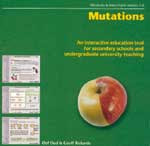
Mutations - Mutations - changes to the gene make-up of an organism - are hugely important. They are responsible for all the genetic variation in humans and other species thus allowing evolutionary changes to take place. Mutations is a comprehensive program in which the types, origins and consequences of both gene (DNA) and chromosome mutations are introduced.
Arthropods of Economic Importance Diaspididae of the World
Yeasts of the World Morphology, physiology, sequences and identification
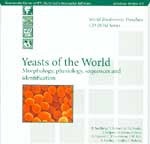
Yeasts are not only essential for the production of bread, beer and wine, but also play a major role in many more modern industrial processes, such as the production of enzymes, pigments, antioxydants etc. Moreover many yeasts are important as human pathogens, or as spoilage organisms in the food industry.
Interactive Guide to Mushrooms and other Fungi
Harmful Marine Dinoflagellates
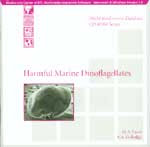
This treatise represents a comprehensive, up-to-date multifunctional dinoflagellate identification database featuring information on 69 species of harmful marine dinoflagellates and associated species present in the world's oceans. This database includes 44 toxin-producing species, brevetoxins, saxitoxins and ciguatoxins, and seven nuisance species that produce 'red tides' often resulting in massive sea life mortalities. In addition to the species description, information is available on the morphology, reproduction, ecology, toxicity, and habitat and locality for each species. A comprehensive glossary of more than 120 related scientific terms, and an extensive literature reference collection containing about 500 citations is included. There are nearly 600 figures illustrating every species via scanning electron micrographs (60%), light micrographs 120%), and/or line drawings (20%). The matrix-based identification key allows for multiple entry of characters to facilitate fast and effective diagnosis of a given species.
Fishes of the North-eastern Atlantic and the Mediterranean
Lemurs of Madagascar and the Comoros
DNA and Proteins
Arthropods of Economic Importance Agromyzidae of the World

The Agromyzidae (mining flies) are a highly diverse dipteran family of exclusively phytophagous species. The world fauna consists of about 2,750 species. Of these, some 110 species are known to occur on cultivated crops. A number of species are of particular importance, especially Liriomyza and Ophiomya.
Chironomidae Larvae Key to the Higher Taxa and Species of the Lowlands of Northwestern Europe
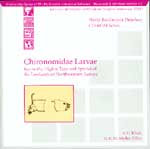
The Chironomidae form a cosmopolitan family of small nematocerous flies represented by some 1,300 species in the West Palaearctic Region. Chironomid larvae are widely distributed and the vast majority have aquatic juvenile stages which, on average, comprise one third of the invertebrate species in freshwater habitats. This usual abundance, and the fact that a number of species are pollution-tolerant, make chironomidae ideal indicator species in monitoring the quality of surface waters.
Flora Malesiana: Orchids of the Philippines Volume 1
Birds of Europe 'The handy birding tool'
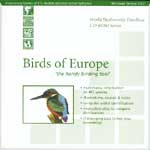
Compiled by European ornithologists, Birds of Europe is a comprehensive source of information on 447 bird species. Detailed descriptions, full colour illustrations, sound recordings of birdcalls, pictures of eggs, video clips, and interactive maps depicting the summer, year-round and winter distribution.
